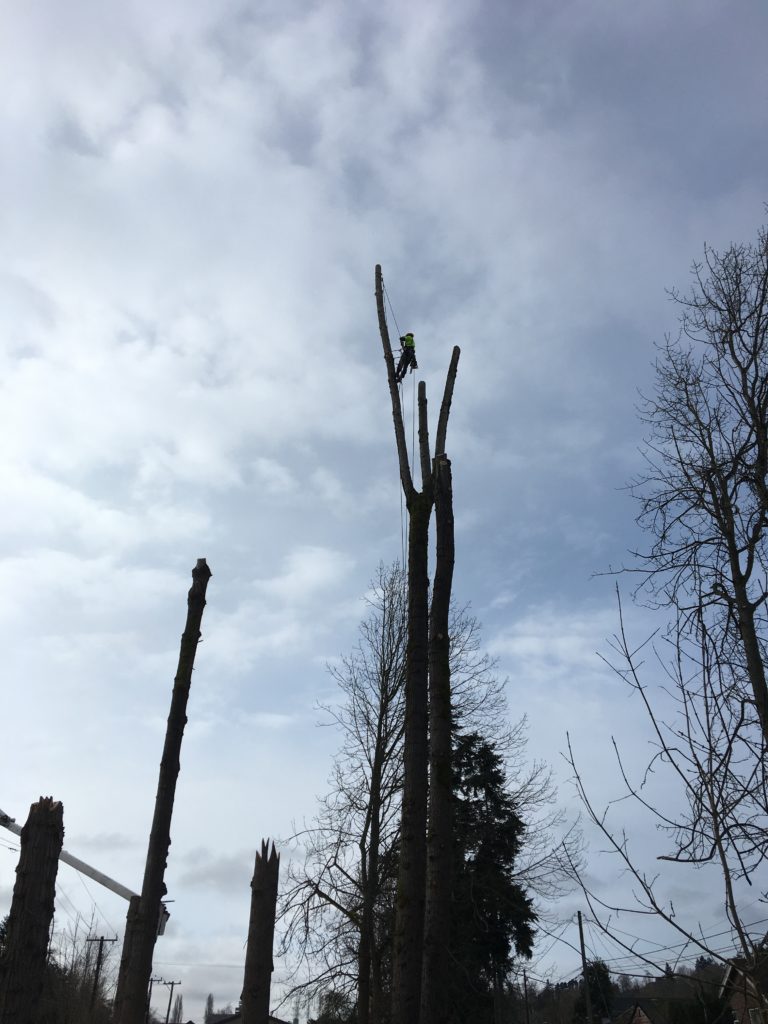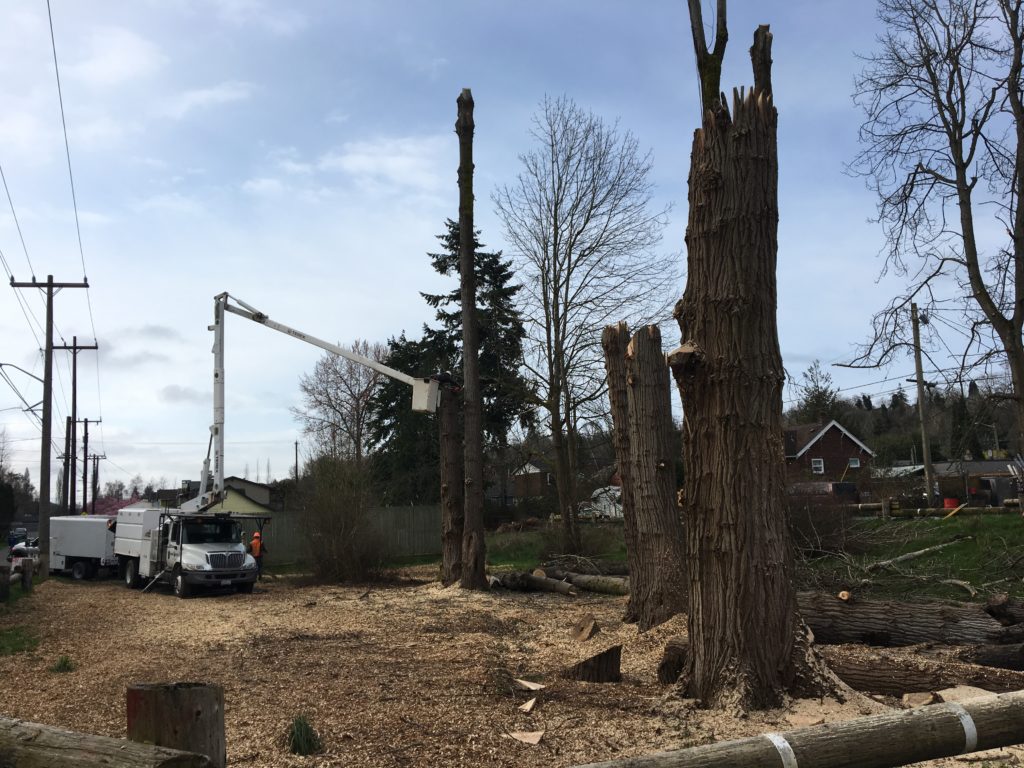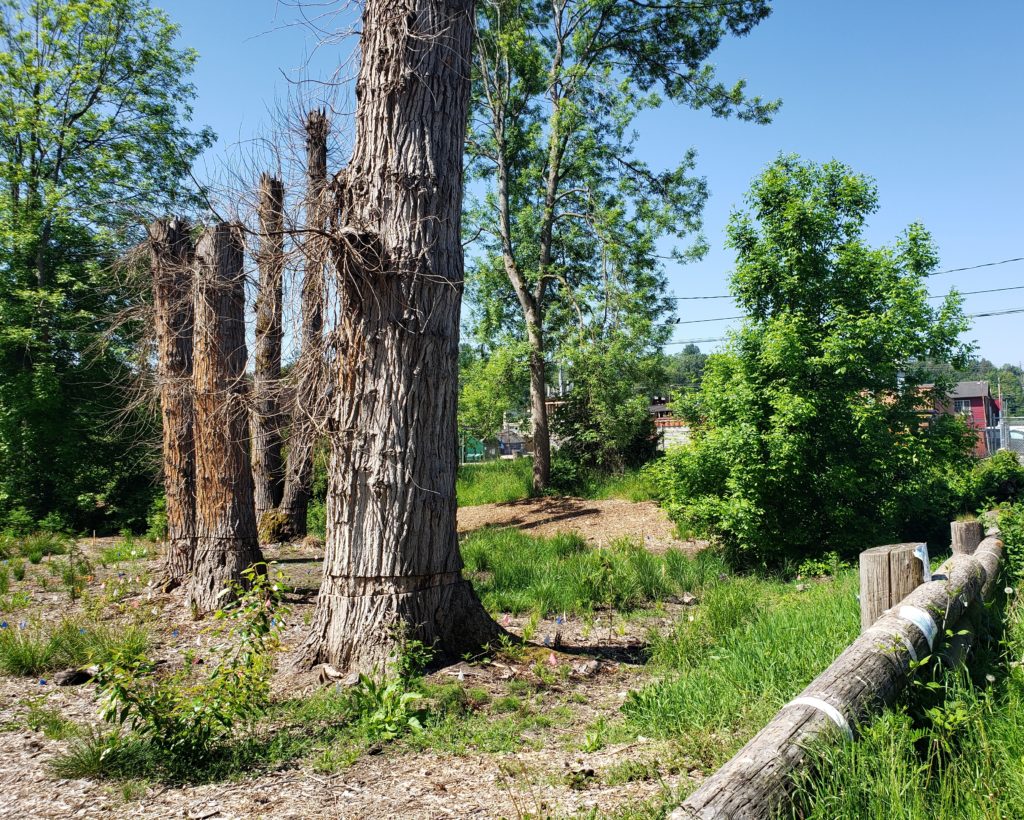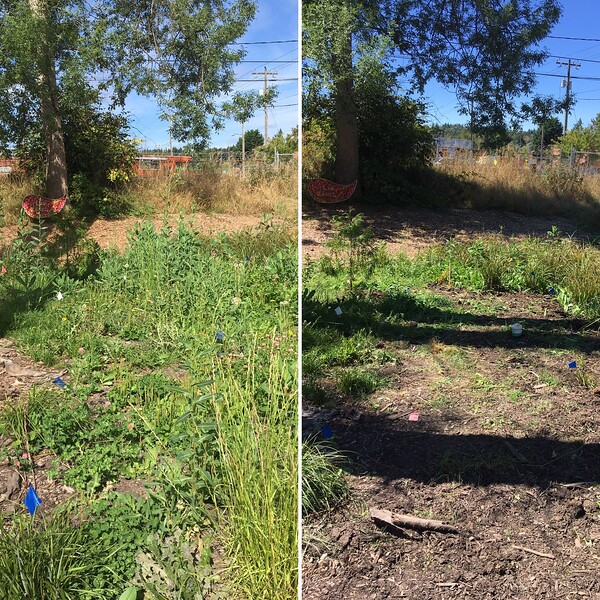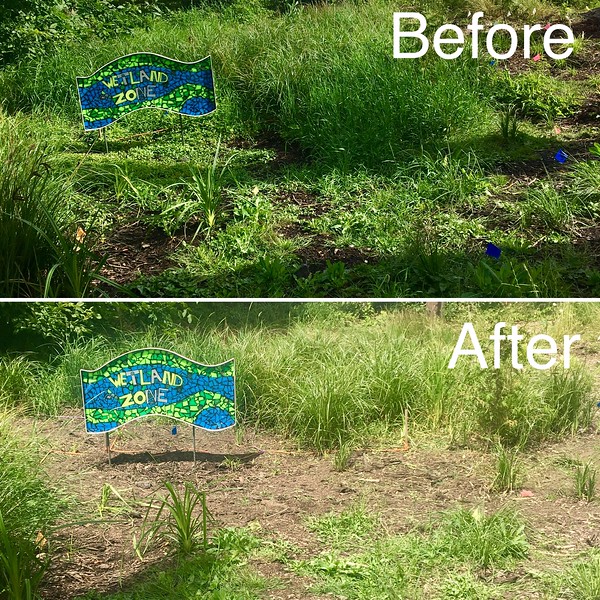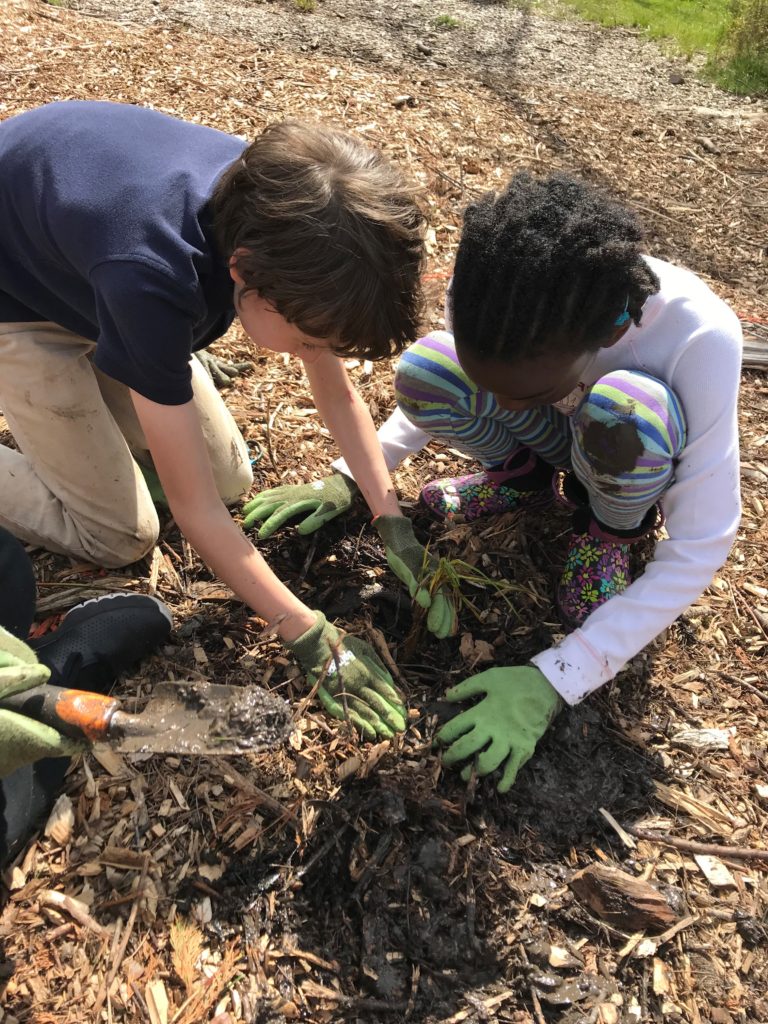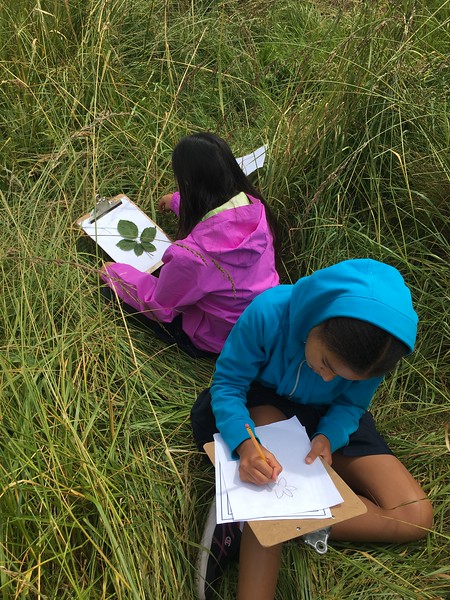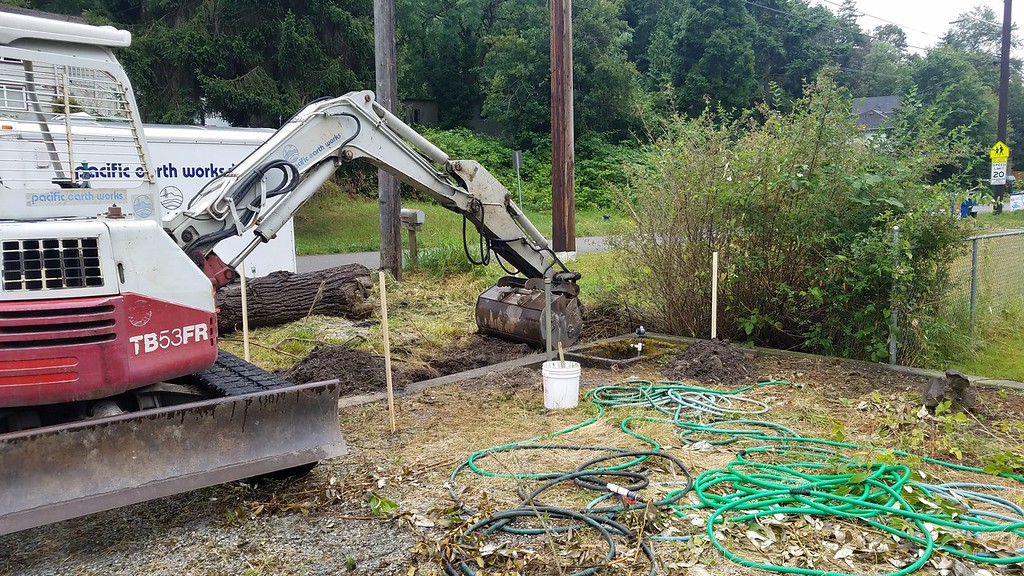Delridge Wetland and Stewardship Project
Construction & Restoration Progress
2017
The large cottonwood trees in the middle of the wetland were removed to clear space for native wetland plants. Cottonwoods do not occur naturally in wetland areas, so in order to fully restore our wetland, we cut down the trees and girdled the stumps to prevent regrowth. Volunteers helped us remove invasive blackberry and Canadian thistle, and we installed several native evergreens.
2018
Over 7,000 square feet of invasive plant removal and mulching was done in the wetland. 8 Western red cedar trees, 33 native shrubs, 120 native ferns and 2,010 native emergent plants were planted throughout the year. To improve the hydrology of the wetland, a watering system was implemented over the summer and coir logs were placed at the inlet and outlet of the wetland to help trap and filter out debris in the water passing through.
2019
Volunteers and students planted 180 emergent and 70 groundcover plants, mulched 1,525 square feet of planting space, and cleared 4,756 square feet of invasive species such as Himalayan blackberry, reed canary grass and bindweed. Our partner classrooms from Louisa Boren STEM K-8 spent 994 hours in the classroom and 884 hours in the wetland creating planting plans, building experimental wetland planters, making mosaic signs, installing plants, and studying topics such as wetland science, wetland soils and chemical monitoring. 300 people attended our six Wetland Workshops, 175 of which were students. The workshops included two block parties, a Wetland Birds & Habitat seminar, two wetland health monitoring workshops and an environmental career day for students.
The chain-link fence surrounding the entry and the inlet of the wetland park was removed to clear up space for us to remove the old, inefficient watering system. We are currently installing a storage shed and a trellis in its place.

